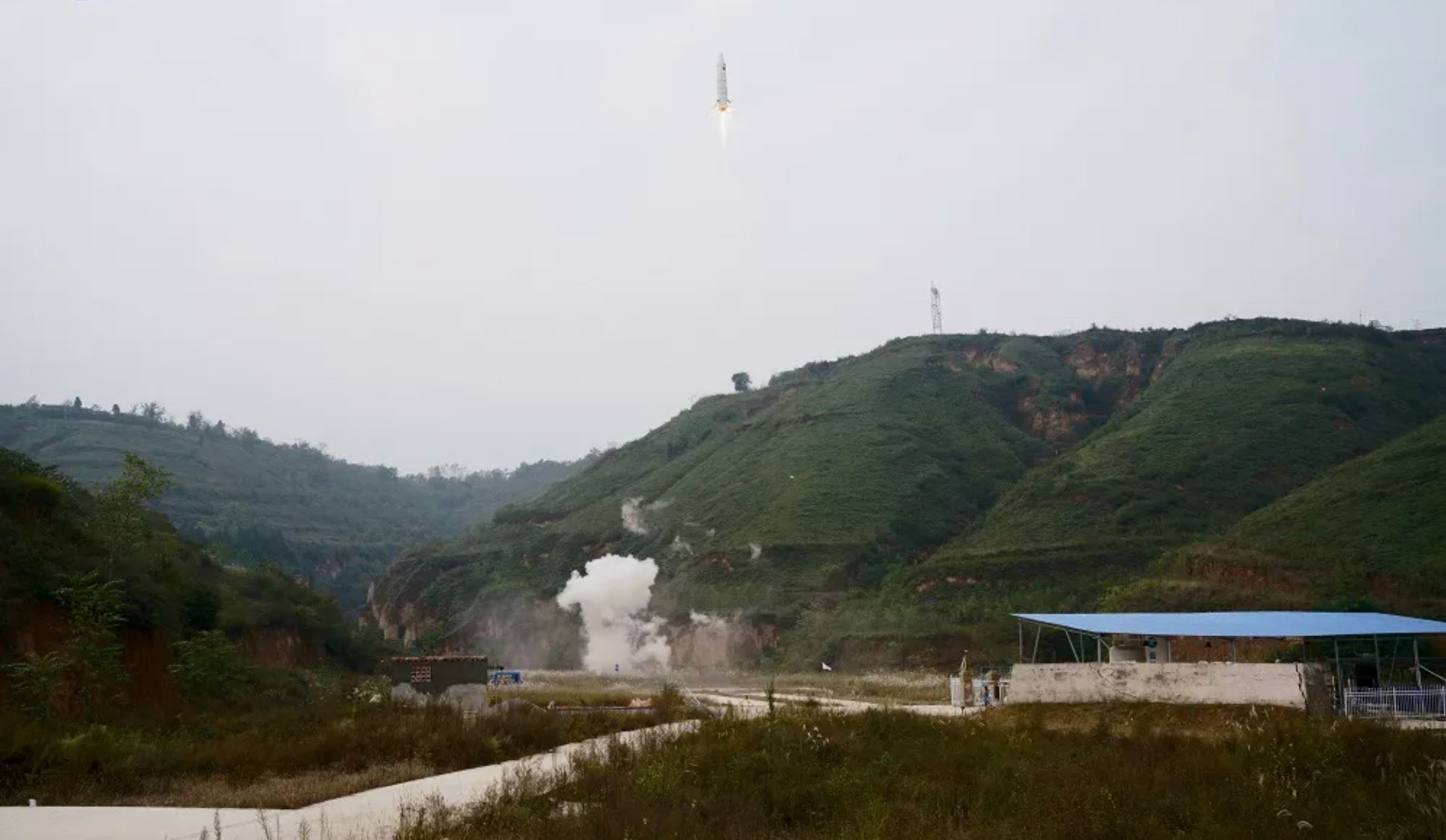Ambitions include constellations, spaceplanes, new launchers and suborbital and orbital tourism
HELSINKI — Players in China’s emerging commercial space sector have outlined big plans for the coming years at a space forum hosted in Wuhan, central China.
The seventh China Commercial Aerospace Forum (CCAF), held in Wuhan Nov. 25-26, saw state-owned defense and space giant China Aerospace Science and Industry Corp., (CASIC), and a variety of private and state-owned companies present updates and plans for the future.
CASIC and its subsidiaries are pushing ahead with an 80-satellite narrowband constellation named Xingyun, with plans to launch at least 12 Xingyun-2 satellites in 2022 to form the second stage of the three-state constellation.
The satellites are expected to be launched in pairs by Kuaizhou-1A rockets operated by subsidiary Expace.
Seven launches of the Kuaizhou-1A light-lift solid rocket are planned for the next three months for various customers. The launcher returned to action in September after being grounded for a year following a failure. The latest launch took place Nov. 24. CASIC had stated in 2020, just prior to the failure, that it planned to launch 12 Xingyun satellites in 2021.
The CASIC-led 68.8-square-kilometer Wuhan National Aerospace Industrial Base became fully operational in February. It is said to be capable of assembling and testing 20 solid rockets and producing 240 small satellites each year.
CASIC’s previously stated plans for the Hongyun broadband constellation were notably absent. The expectation is that Hongyun and other similar constellation plans have been subsumed by a national plan for a 13,000-satellite megaconstellation.
Spaceplanes and space tourism
A presentation from CASIC notably included a statement that a flight test of a turbine-based combined cycle engine had been completed, indicating progress in the company’s plans to develop the Tegnyun spaceplane. The announcement follows cryptic posts from subsidiaries on combined propulsion tests in the Gobi Desert.
Chinese hypersonic vehicles and potential weapons have been in sharp focus in recent weeks following reports of tests published by the Financial Times based on U.S. intelligence.
CASIC is far from the only Chinese entity engaged in spaceplane development. The China Aerospace Science and Technology Corp. (CASC), the country’s main space contractor, has carried out highly classified orbital and suborbital tests of vehicles for a reusable space transportation system involving vertical takeoff and horizontal landing.
Beijing-based private firm iSpace also presented plans for a spaceplane at CCAF. The vehicle, still at the concept stage, would launch on a future Hyperbola-3 methane-liquid oxygen launch vehicle and could offer both suborbital and orbital tourist flights. The Hyperbola-2, featuring a reusable first stage, could launch in 2022. However hop tests expected this year have apparently not yet taken place.
CAS Space, a launch spinoff from the Chinese Academy of Sciences, is progressing towards its first launch with the ZK-1A (also known as Lijian-1) solid rocket, expected in the first quarter of 2022. Tests with a transporter erector launch have recently taken place at Haiyang spaceport for maritime launches. CAS Space’s ZK launch family plans include solid and reusable liquid rockets.
CAS Space is also looking at suborbital tourism. A recently unveiled concept featured renders bearing resemblance to both Blue Origin’s New Shephard and the SpaceX Crew Dragon. The company aims to provide rides to space for tourists as soon as 2024.
Deep Blue Aerospace, a startup developing kerosene-LOX reusable launchers, unveiled a plan to build on its in-development Nebula-1 launcher with the Nebula-1H, a three-core rocket which would apparently take a similar approach to SpaceX in its development of the Falcon Heavy from the Falcon 9. The firm successfully performed a first domestic kerolox VTVL test to 100 meters in October.
Firms including Space Trek, space resources company Origin Space, Changguang Satellite, Jiuzhou Yunjian, ADA Space, Galactic Energy and Commsat were also involved at CCAF.
Commercial space development
The Chinese government took the policy decision in late 2014 to open up portions of the space sector to private involvement.
Policy support and guidance — including regulations for launch and small satellites and national strategies supporting “satellite internet” — as well as investment, from a mix of venture capital and government-linked investment vehicles, has followed in recent years.
China’s private and state-owned spinoff commercial companies have so far launched light-lift solid rockets, but first launches of liquid propellant launchers are expected in 2022. Landspace appears closest to this landmark launch, with ground tests of the Zhuque-2 methane-liquid oxygen launch vehicle apparently underway at Haiyang spaceport. Zhuque-2 could lift off in the first quarter of 2022, according to company CEO Zhang Changwu.
COVID has impacted the work and supply chains of the commercial sector. Building new infrastructure has also been of importance, which presents a bottleneck to the expansion of China’s space activities.
New facilities are being constructed at the Jiuquan Satellite Launch Center which are expected to allow launches of new, cryogenic launch vehicles. Jiuquan hosts launches of older, hypergolic Long March rockets along with the vast majority of commercial solid rockets.
China’s larger new generation kerosene-LOX rockets launch from a new coastal spaceport at Wenchang, Hainan island. Haiyang and Wenchang are planning to host commercial launches in the future.
Hundreds of companies have emerged in various areas of space activities, including satellite manufacturing and operating, ground segment, supply chains and downstream applications.
Local and provincial governments are also seeking to attract high-end technology space sector companies to boost local economies. Clusters are being promoted in places including Wuhan, Guangzhou, Beijing, Shenzhen, Chengdu, Xi’an, Changsha and Wenchang.
A number of cities in the Yangtze River Delta region recently agreed to cooperate to develop a “G60” satellite chain to promote a satellite internet cluster as part of a Science and Technology Innovation Valley initiative backed by the highest levels of government. The name comes from the G60 expressway which runs through several cities in the region.
